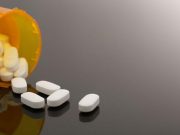Tag: Atrial Fibrillation
Bleeding Higher With Standard-Dose DOACs in Nonvalvular A-Fib
Higher rate of bleeding seen with standard- versus reduced-dose DOACs in patients 65 years and older
AHA: Apixaban Beneficial for Patients With Subclinical A-Fib
Risk for stroke or systemic embolism lower with apixaban versus aspirin for patients with subclinical a-fib
Earlier Onset of A-Fib Linked to Risk of Developing All-Cause Dementia
Younger age at a-fib onset linked to increased risks of all-cause and vascular dementia, Alzheimer disease
Incident A-Fib Linked to Increased Risk of Mild Cognitive Impairment
Risk of MCI not increased for patients with incident a-fib receiving digoxin treatment or anticoagulant and amiodarone treatment
Deep Learning Model Predicts Atrial Fibrillation From Outpatient ECGs
Findings seen for atrial fibrillation in diverse populations
One-Third With Transient New-Onset A-Fib Have Recurrence
Recurrence within one year seen for 33.1 percent of those who have transient new-onset a-fib during hospitalization
Hypoattenuation Thickening on CT Prognostic After Left Atrial Appendage Occlusion
High-grade hypoattenuation thickening on follow-up CT after left atrial appendage occlusion associated with higher stroke risk
DOACs Reduce Dementia Risk Versus Warfarin in A-Fib
Significant reductions were seen in dementia risk for rivaroxaban, apixaban, and dabigatran versus warfarin in network meta-analysis
Psychosocial Stressors Tied to Incident Atrial Fibrillation in Postmenopausal Women
Analysis revealed two clusters of highly correlated psychosocial factors -- stress and strain
ESC: Catheter Ablation Aids Symptomatic Atrial Fibrillation, End-Stage Heart Failure
Patient benefits seen for all-cause mortality, implantation of a left ventricular assist device, or urgent heart transplantation














